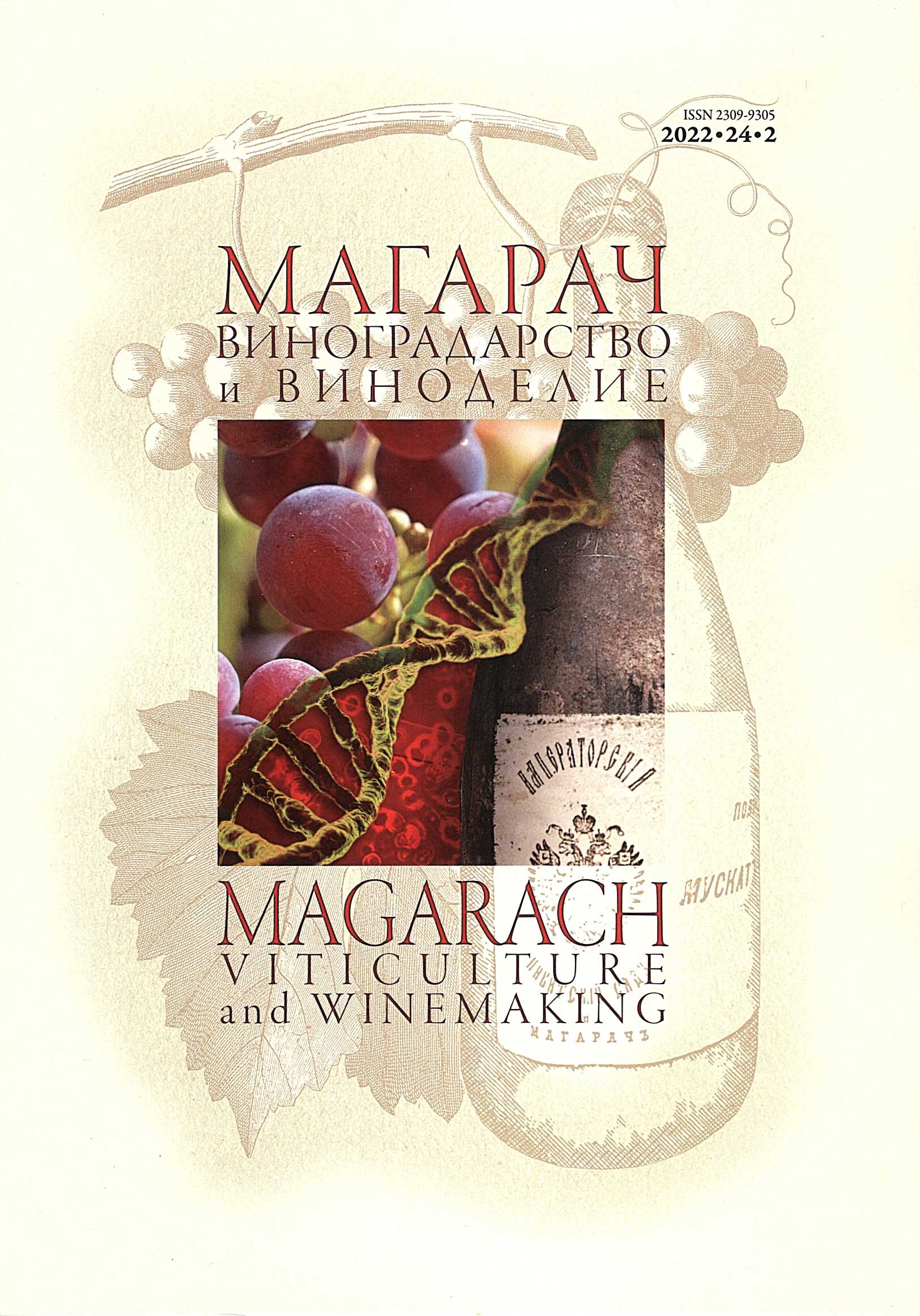Abstract
The results of the effect of various processing schemes on physicochemical indicators and typical properties of assemblages for red sparkling wines are presented. It was established that the applied processing schemes reduce the indicator of maximum foam volume by an average of 54%. A decrease in the time of foam breakdown with the combined use of preparations polyvinylpolypyrrolidone (PVPP) + bentonite was registered only in base wine of ‘Saperavi’ variety. The most gentle in relation to the phenolic complex is the processing with gelatin or gelatin + bentonite, in which a decrease in the content of phenolic substances by an average of 15% is noted, and by 20% when using the PVPP preparation. In order to reduce the content of phenolic substances, the most effective is to use PVPP + bentonite processing scheme. To ensure stability to reversible colloidal haze, it is necessary to apply an individual approach taking into account varietal characteristics. Thus, the optimal doses of fining agents (erbigel - gelatin, bentonite) were established, ensuring the stability to reversible colloidal haze: for a sample of ‘Rubynovyi Magaracha’ base wine, respectively, 50 mg/l + 0.5 g/l, for ‘Saperavi’ - 50 mg/l + 1 g/l, and for ‘Pamyati Golodrigi’ - 100 mg/l + 1 g/l. The data obtained will be further used in selection of the most effective schemes of processing assemblages in the production of red sparkling wines.


